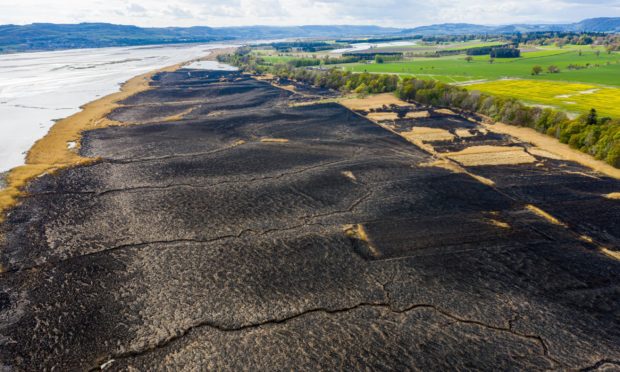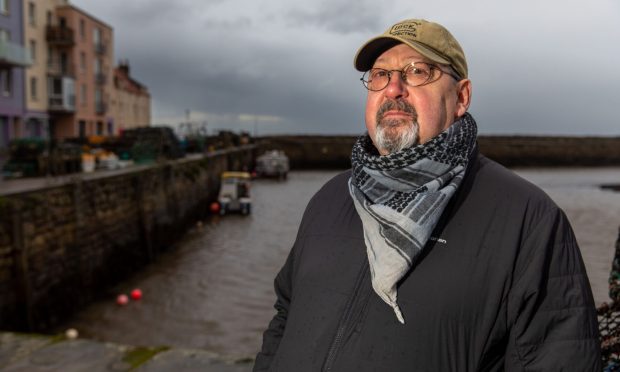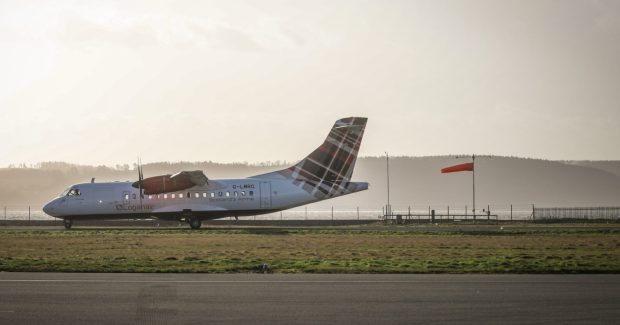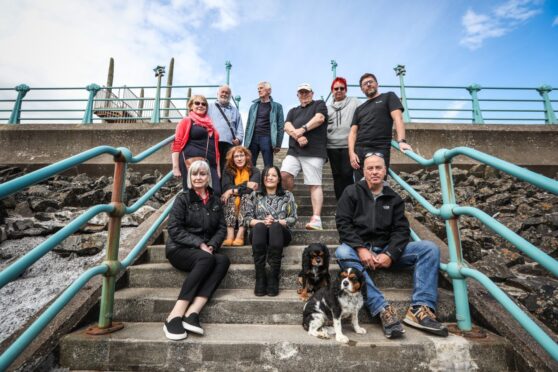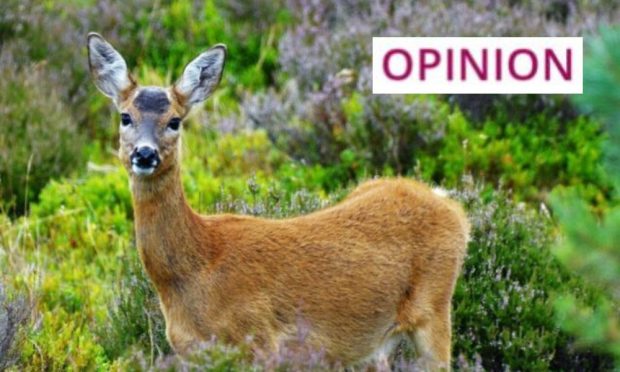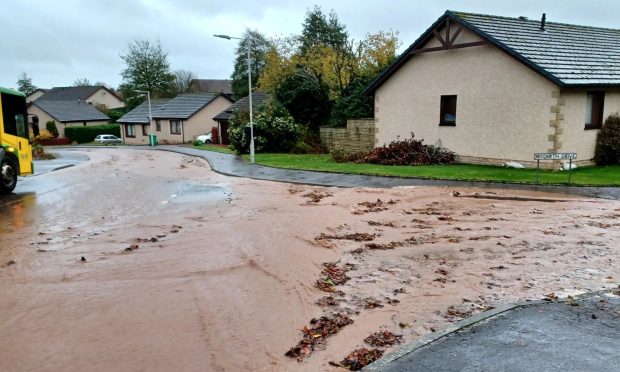Locals watched in horror on Monday as one of Tayside’s natural wonders was consumed by a massive fire. It its height, the flames tearing through the River Tay reed beds reached up to 40ft high and the smoke clouds were seen as far away as Portobello in Edinburgh.
Almost two miles of reeds were lost as the fire raged on the riverbank around Errol, destroying the nests of rare bearded tits and marsh harriers as it spread westward.
The blaze sparked a huge response from the Scottish Fire and Rescue Service, who enlisted the help of a local helicopter pilot in bringing it under control within a matter of hours.
They successfully stopped the spread of the fire further upstream and to neighbouring woodlands and properties – though the cause of the incident remains the subject of an on-going investigation.
But how did they manage to bring the blaze under control? And what will the long-term damage be to the site, which is the largest continuous reed bed in the whole of the UK?
Read on to find out.
The Pilot
Guy Stephens stepped into action after spotting the smoke from his kitchen window in Errol.
The helicopter pilot has been credited with preventing even more extensive damage at the site – and with protecting firefighters from the major risks associated with grassland fires.
The thick reeds near Errol represented between 10-15 years of growth, and were extremely difficult and dangerous to tackle.
Guy, who lives less than two miles from the conservation area doused the burning bird habitat with 77,000 litres of water taken from the River Tay as fire crews tried to contain the blaze.
The pilot, who works for Skyhook Helicopters, has experience helping fire crews and was forced to “duck and dive” between the billowing black smoke in order to dump his water buckets on the towering flames.
Guy said: “I live in Errol and I could see the fire from my kitchen window.
“So I phoned the control room in Dundee and told them I had an asset available. Each fire is significantly different.
“Moorland fires are not so bad but this one was a little bit scary because of the plumes of black smoke and the fire was burning into the wind so it was very hard to get in above the flames to dump the water.
“There was a lot of ducking and diving because I can’t fly through the smoke.
“Usually if you can get a couple of decent dumps it dampens it down a bit and that allows you to get more accurate placement.”
Guy helped tackle the fire for about two hours and believes he was lucky it had broken out where he had easy access to water.
The pilot dropped 77,000 litres of water on the fire, filling his helicopter’s 1,000 litre bucket, 77 times.
He said: “It was fortunate because we had the River Tay right beside us and it only took a few seconds to get over and back.
“That amount of water in such a close proximity makes a massive difference.”
The Errol fire is the second Guy has helped tackle in less than a week after spending four days in Drumfries and Galloway fighting a 15km wildfire.
He said: “We’ll travel anywhere that needs help.
“It’s this time of of year where we just need to drop everything and go to get on top of it.”
The firefighters
With conditions extremely dry conditions and a strong wind blowing up the Tay, many feared the worst.
A wall of flames ignited along the riverside, a stone’s throw from neighbouring woodland and even homes along the river.
Faced with a rapidly spreading fire tearing through thick reeds on marshy ground; peril surrounded the firefighters at all sides.
Without air support, their job would have proved even more difficult.
Gordon Pryde is the Scottish Fire and Rescue Service’s local senior officer for Perth and Kinross, Angus and Dundee.
He said: “On arrival, there was a significantly well-developed fire in the reed beds and obviously that was spreading quite quickly.
“So we increased our appliances and the staff that we allocated and resources.”
Nine appliances were sent to the scene, along with further support. Among the equipment used was an all-terrain vehicle, which allowed crews to firefight using an on-board fogging pump.
Police were also at the scene.
Mr Pryde said his colleagues faced “significant hazards” at the reed beds.
He added: “We were met with a significant fire in the reed beds, which was obviously quite a challenging fire to address.
“It was a large scale fire with a damage of approximately 3km by 1km (1.9 by 0.6 miles) by the end of the incident, and significant flames which were 30ft-40ft in the air at one point.”
He said the use of the helicopter allowed firefighters to surround the blaze and stop it spreading to neighbouring homes.
Mr Pryde added: “Due to the geographical nature of the environment, it wasn’t safe for the crews to actually get in to the reed beds while the fire was at its height, so we were able to work with partners – including RSPB Scotland, who manage the land – and were able to access a helicopter.
“This allowed firefighting staff on the ground to surround the fire, prevent significant further spread – especially to affected building (and) life-risk. We were able to use a helicopter to douse the majority of the fire.
“There was certainly significant challenges and a significant risk to the operational crews due to the nature of the grounds.
“The marshland there, it would be hard for our staff to get into the reed beds. In addition to that, if the wind was to change, we would then have to keep our staff away from that. So there were significant hazards.
“Certainly the helicopter allowed us to put large quantities of water exactly where we need it.
“Whereas if we had not had access to that helicopter we would have had to tackle it from the edges and work our way in, which would take longer and there would be the potential for greater fire spread during that longer period of burning.”
He said once the majority of the flames were doused, crews went to work tackling “hotspots”.
“Once we then got the fire under control, it was then safe for us to get our staff closer to the incident to really put water into the hotspots that were left after the helicopter had extinguished the majority of the fire,” he added.
“And that allowed us to basically call a stop to our operational response on Monday night around about 9pm.
“The crews then returned Tuesday morning just to inspect and make sure if there were any further hotspots we needed to extinguish, and they were able to monitor that and double-check there weren’t any further issues to be addressed.”
He added the work done by his team in preventing further damage on the reed beds had made him proud.
“It was a very challenging incident for the staff,” Mr Pryde said.
“It was a complex incident. The work by the staff really, as always, I am impressed.
“We will continue to do that throughout this heightened period of Covid and will try to keep the communities as safe as possible.”
He said the dry weather has resulted in a number of major wildfires across Scotland in recent weeks – but that local teams were prepared for them.
Mr Pryde added: “The easiest way to tackle these fires is to prevent them happening in the first place.
“So the key message really for us is, as and when the lockdown changes throughout the area, if people are outside and enjoying the countryside, just be careful.
“And bear that in mind especially if the conditions remain dry over the next few weeks and months.”
Investigations into the cause of the incident remain on-going.
Mr Pryde said: “We are still looking into it. We still have further inquiries on-going and we are working with partners throughout Scotland and the owners of the land to get to the bottom of it.”
The reed-cutter
This is not the first blaze Graham Craig has witnessed on the Tay reed beds in his lifetime.
As the last person to have harvested Tay reed commercially, doing so from the 1970s until 2005, he often used controlled fires as a management tool. This no longer takes place at the site.
However, Graham has not witnessed a wildfire on these wetlands since he was a young boy in Longforgan – and not one on this scale.
He suspects human involvement may have played a part in the blaze which took hold in the nature reserve, which is a Site of Special Scientific Interest and home to some of the UK’s rarest breeding birds.
Graham believes that a fire “wouldn’t just start off its own accord” at the reeds “even if it was the warmest day of the year” – and said it may have been started by a person, possibly accidentally.
He added: “I think it would be started. Once it starts there is no way you stop that.
“Even a managed fire, once it starts, it is pretty scary; because once it starts burning it starts to generate wind as it goes.
“It would have eventually burned itself out at Port Allen. There is a natural break there.”
Mr Craig said the fire-hit section of reeds, the widest in the area, amounted to “10 possibly 15 years of standing reed there that’s never been touched”.
He added: “Basically it is really really, really thick reed. So once that starts to burn it is very difficult to stop.”
However Graham says the affected grassland will be back to its “full height” as early as August,
The phragmites reeds on the Tay can grow at a speed of up to 3in a day. And Mr Craig said come August, the whole area will be recolonised.
He added: “It will not be long and it will be colonised again. It is amazing stuff. That will be back up to 6ft high by August.
“It is just the wildlife that is on it they are going to suffer for this summer anyway.”
He hopes that few chicks will have been lost to the flames due to it being early in the breeding season, and believes the site’s bearded tits will establish new nests in other parts of the beds.
However he fears for the marsh harriers which nested in the area.
There were two or three of the predators living at the site which was hit by the blaze.
Mr Craig said: “The worst one really will be the marsh harrier because in that particular section I think there is two possibly three nests and I believe by what I’ve heard so far one nest has already had eggs in it seemingly.
“The unfortunate thing is marsh harriers tend to go back to the same nest sites year on year.
“So whether they would actually move to another section of the reed bed I don’t know. All being well they will hopefully come back. They might rebuild in the same sections. We’ll just have to hope they do.
“The smaller birds, the bearded tits, they are the most common one down there and the one that RSPB are managing for. They would probably quite happily move somewhere else on to another section of the reed bed.”
He added: “Obviously in the interim there is nothing for the birds because a lot of the old reed would have seed in the heads.
“And that is what the bearded tits they go for the seed in the winter and as they come into the summer they go for more of the grit on the lowers ground of the reed bed.”
He said firefighting on reed beds is “tough going”, adding: “You can barely walk through the reed because it is that thick. I think the use of the helicopter, that had helped a big way.”
